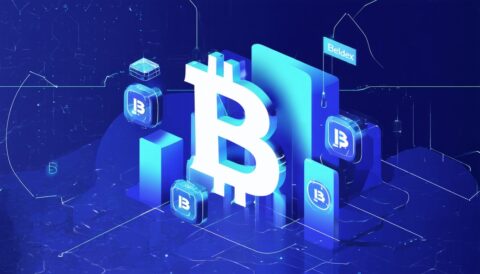Solana, once dubbed an “Ethereum killer,” continues to command attention as one of the world’s fastest and most scalable blockchain networks. Since its launch, Solana has experienced both meteoric growth and periods of volatility, solidifying its reputation as a top-10 cryptocurrency by market capitalization. As 2025 approaches, investors, developers, and crypto analysts are sharply focused on one central question: what does the future hold for Solana’s price?
This analysis will examine key factors influencing Solana’s price prediction for 2025, incorporating expert forecasts, on-chain trends, and macroeconomic dynamics. By evaluating Solana’s technology, real-world utility, and external risks, this article aims to provide a nuanced view of Solana’s growth potential through the lens of credible data and industry expertise.
Key Drivers Shaping Solana Price Prediction 2025
A cryptocurrency’s price trajectory hinges on multiple variables—technological advancements, demand from real-world applications, regulation, and overall market sentiment. Solana’s journey to date has been shaped by these drivers, and their impact is expected to deepen in the coming years.
1. Technological Innovation and Network Upgrades
Solana’s unique proof-of-history (PoH) consensus mechanism enables remarkable transaction speeds—reportedly processing 65,000 transactions per second—at minimal fees. This technical edge continues to attract developers and decentralized applications (dApps), particularly in sectors like decentralized finance (DeFi), non-fungible tokens (NFTs), and gaming.
In 2023 and 2024, major upgrades such as Firedancer (a new third-party validator client) and enhanced network reliability aimed to address past outages. These improvements are not only technical milestones but also crucial for instilling confidence in large-scale investors.
“Network resilience and scalability are not just technical achievements—they’re the backbone of long-term value creation and sustained price growth for blockchain tokens like Solana,” says blockchain researcher Dr. Laila Chen.
As more developers migrate or build on Solana due to these innovations, demand for the native SOL token is likely to intensify, exerting upward pressure on price.
2. Ecosystem Growth and Institutional Adoption
Beyond technical prowess, Solana’s price outlook is deeply intertwined with its ecosystem expansion. According to data from blockchain analytics sources, the Solana platform has seen robust growth in the number and diversity of dApps, particularly in DeFi and NFT marketplaces.
High-profile projects—such as stepn (a move-to-earn fitness app), Magic Eden (an NFT platform), and Jupiter (a DEX aggregator)—have brought both transaction volume and media spotlight to Solana. Moreover, prominent venture capital firms have continued to support Solana-based startups, signaling sustained institutional interest.
Institutional adoption is also gaining momentum. While the broader crypto market faces regulatory scrutiny, partnerships with established brands and integration into traditional finance infrastructure could propel SOL into a new phase of maturity.
3. Tokenomics, Supply Dynamics, and Staking
Solana’s monetary policy ensures a capped supply, with inflation gradually decreasing over time. A significant portion of SOL tokens is locked up in staking contracts, as users seek rewards for securing the network.
According to industry trackers, approximately 60–70% of SOL supply is regularly staked—a figure higher than many other proof-of-stake blockchains. This constrains liquid supply, which can amplify price swings during periods of rising demand.
Furthermore, staking yields and reward structures are subject to protocol upgrades and governance proposals. Any major changes here could have knock-on effects on investor behavior and future price performance.
Expert Forecasts for Solana Price in 2025
Forecasting crypto prices is famously fraught with uncertainty, especially over multi-year horizons. Nonetheless, several respected analysts and market research firms have issued Solana price predictions for 2025, drawing on both technical analysis and fundamental indicators.
Quantitative Models and Price Ranges
- Moderate Optimism: Some quantitative analysts foresee SOL trading in a broad range, with potential to revisit previous all-time highs if bullish market conditions persist.
- High-End Forecasts: In more optimistic scenarios, assuming a wider crypto bull market and Solana’s integration into mainstream fintech, certain projections set the upper target well above $300.
- Conservative Outlook: On the flip side, more conservative experts highlight technical risks and potential regulatory headwinds, suggesting Solana could face substantial volatility, with 2025 prices ranging from $80 to $150.
Real-World Case Studies
The DeFi boom of 2021 is instructive—at its peak, Solana’s TVL (total value locked) soared, propelling SOL to unexpected price levels. Today, with thousands of dApps and millions of active wallets, Solana’s user base continues to grow, albeit at a steadier pace. Should another wave of innovation—such as real-world assets or scalable gaming platforms—hit the blockchain, price momentum could accelerate swiftly.
Potential Risks and Challenges
While the outlook for Solana remains promising, it is essential to weigh potential obstacles on the horizon.
Competition from Alternative Blockchains
Ethereum’s continued dominance, along with Layer 2 scaling solutions and rising competitors like Aptos and Sui, ensures fierce competition for dApp market share. Solana must maintain its performance edge and avoid repeating prior network outages to stay relevant.
Regulatory and Market Uncertainty
Global regulatory frameworks continue to evolve. While some jurisdictions embrace crypto innovation, others clamp down on areas like token issuance and DeFi, introducing an element of unpredictability. A sudden shift in policy or landmark legal case could reshape market dynamics overnight.
Security and Centralization Concerns
Security incidents—including temporary outages or potential exploits—have historically depressed Solana’s price and reputation. Additionally, criticisms around validator centralization remain a topic of debate. Addressing these issues is vital for long-term trust and price stability.
Concluding Thoughts: What’s in Store for SOL in 2025?
Solana stands at a crossroads, blending powerful technology with an active development community and robust institutional backing. As of early 2024, most signs point toward ongoing adoption—provided the network can deliver on its technical promises and withstand the shifting tides of regulation and competition.
For investors, Solana’s price prediction for 2025 is best viewed as a probability curve shaped by innovation, network growth, and macroeconomic sentiment. Prudent portfolio management—grounded in both optimism and risk awareness—remains key.
FAQs
What factors are most likely to impact Solana’s price in 2025?
Solana’s 2025 price will be influenced by further technological advancements, expansion of its ecosystem, regulatory decisions, and macroeconomic trends in the wider crypto market.
How does Solana’s approach differ from Ethereum’s in terms of scalability?
Solana uses a unique proof-of-history consensus that enables high throughput and low fees, while Ethereum relies on a different proof-of-stake model supplemented by Layer 2 solutions to handle scalability.
Are there risks associated with investing in Solana for the long term?
Yes, major risks include technical vulnerabilities, network outages, regulatory uncertainty, and growing competition from other high-performance blockchains.
What sets Solana apart from other blockchains in the NFT and DeFi sectors?
Solana offers low transaction fees and high speed, which attracts developers and users in NFT and DeFi spaces, alongside a rapidly expanding suite of decentralized applications.
How is SOL’s supply managed, and why does it matter for price?
Solana’s supply is capped, with a significant share staked for network security. This reduces circulating supply and can create price volatility during periods of high demand.



